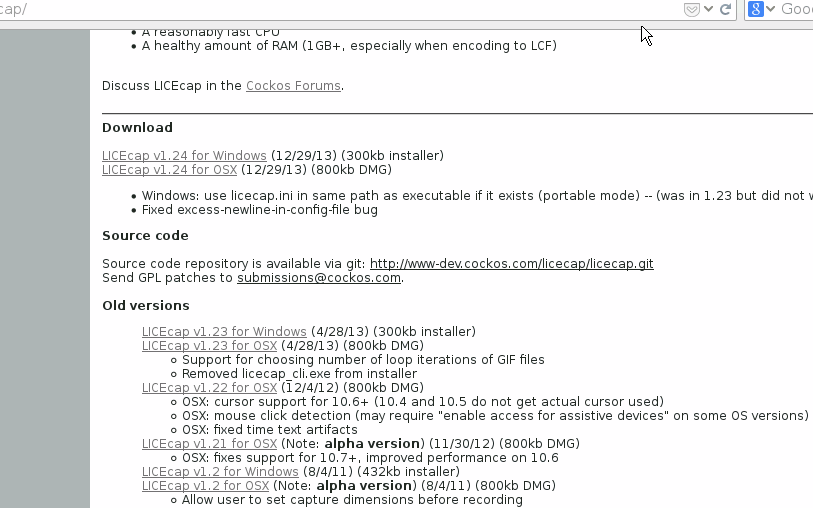

Saving the animation to a regular image file does mean you'll be able to use and play it just about anywhere, though, and LICEcap's simplicity is another major plus. For Linux or Ubuntu rather you can use something a bit similar or at least easier. And GIFs only support 256 colours, so they're not going to look great. Animations of any size or length will produce very large files. LICEcap simple animated screen capture tool for Windows and OS X (by justinfrankel).
#LICECAP LINUX FULL#
You can't capture the full desktop, for example. Compare licecap vs Kooha and see what are their differences. Once you've finished, click Stop, and the animated GIF will be saved, ready for use. And so you'll need to launch a program, open a dialog, browse some menus, or whatever else you're intending to do. And you can specify how many times the animation should repeat (or just leave it to run forever).Įnter a file name, click Save, and LICEcap immediately begins recording the area you've specified.

LICEcap can highlight mouse clicks, handy for tutorials. So you might enter a title, which will be displayed at the beginning of the animation. Once that's done, clicking "Record" gives you a few useful options. Launch the program and there's no clutter, no menus, no complex settings: just a window which you can resize and drag to whatever area you'd like to capture.
#LICECAP LINUX MAC#

#LICECAP LINUX HOW TO#
If you need more information about any of them, how to use them, when to use them, feel free to ask me. Those are mine day-to-day tools I use all the time. Lightshot - in my opinion best screenshot tool.gif, great for small step explanation when bug reporting and easy to use. Screen Recorder - not so great but gets the job done.Selectors Hub - xpaths and locators problem solver and identifier (fav tool).Json Viewer - to save your eyes from ugly formatted JSON.Black Menu for Google - extension that has all google common services in you extension bar, accessible on one click.Screencastify - great tool for screenrecording and sharing.Fake Filler - saver of your time during exploration testing.BugMagnet - great tool for skeleton strings and buggy data.I would start with extensions in my case - all free:


 0 kommentar(er)
0 kommentar(er)
